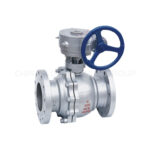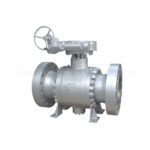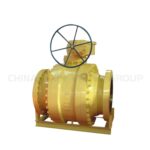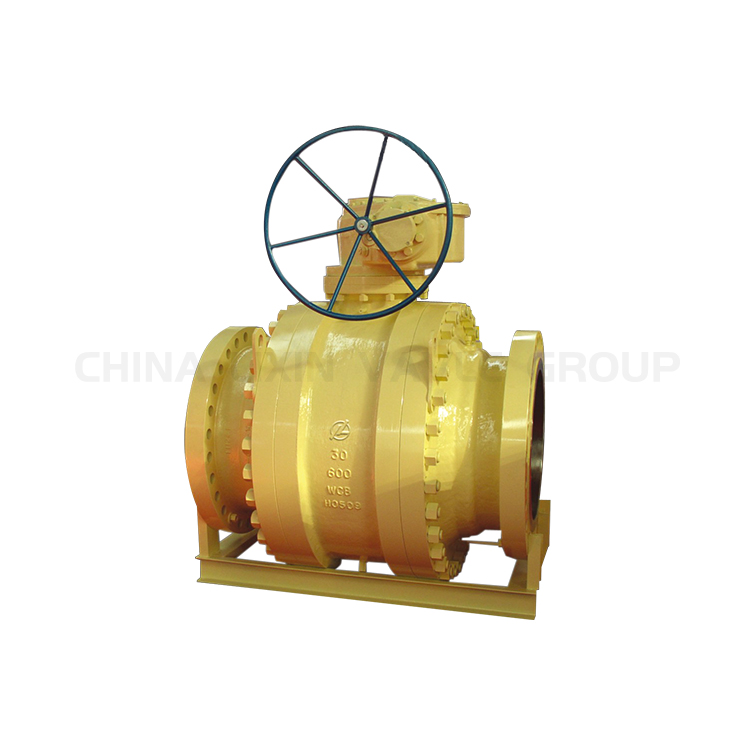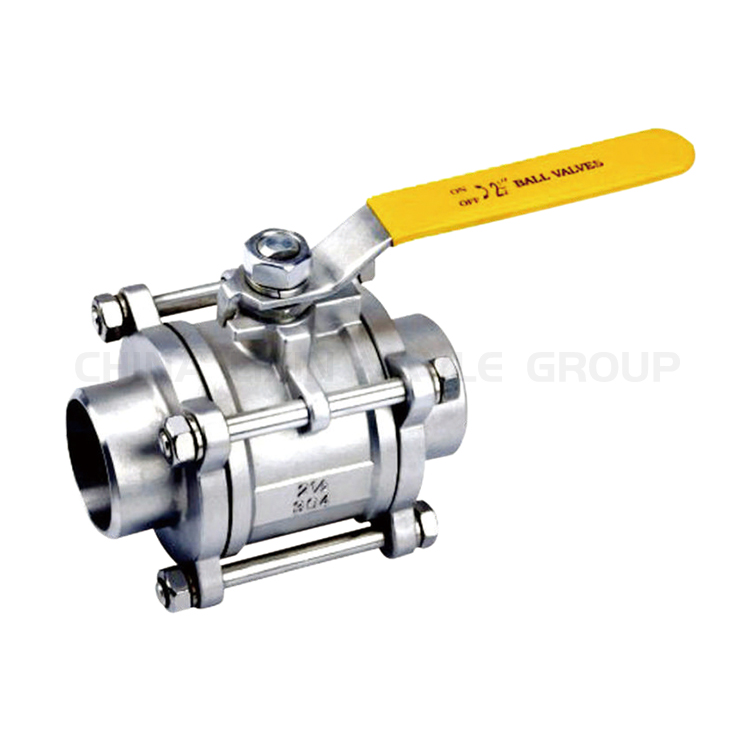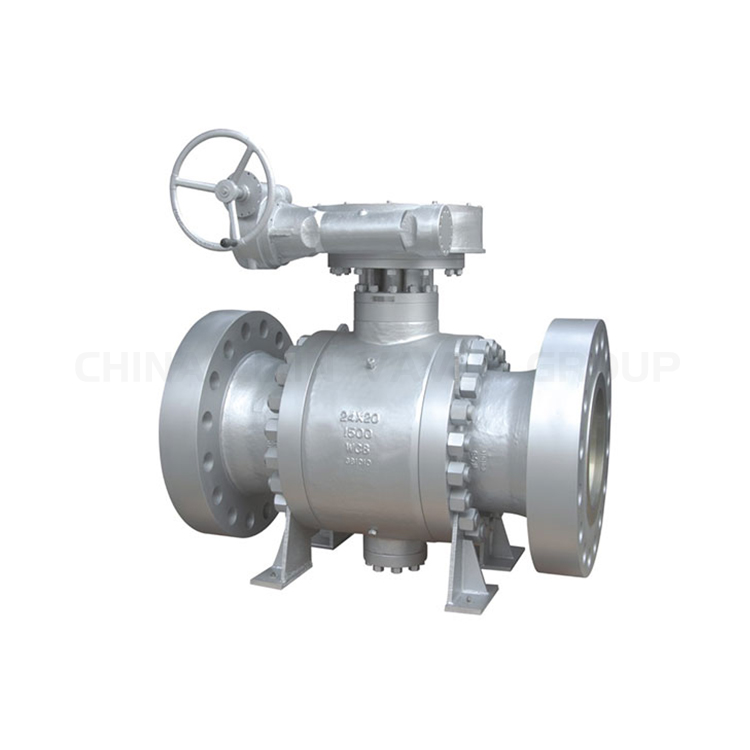API 6D Ball Valve: A Complete Guide
What is API 6D Ball Valve?

API 6D ball valves comply with American Petroleum Institute (API) standard 6D and are commonly used in oil and gas, chemical and other industrial fields. The ball valves offered by us fully comply with the design, manufacturing and testing standards of API 6D specifications. Ball valves are designed and manufactured to ensure maximum service life and reliability, and all valves comply with API 6D full bore or reduced bore requirements. We offer a full range of body/bonnet materials and trims to meet different needs. API 6D ball valve is suitable for pressure classes such as Class 150, Class 300, Class 400, Class 600, Class 900, Class 1500 and Class 2500.
Types of API 6D Ball Valves
The four types of API 6D Ball Valves are described below:
Trunnion Mounted Ball Valve
Trunnion mounted ball valve utilizes their unique design to provide superior sealing and stability through the use of a fixed support rod (trunnion) on the ball. Whether it’s high pressure, high temperature or corrosive media, these valves are designed to withstand the pressures and stresses of extreme conditions, ensuring the safe operation of fluid lines. Trunnion-mounted ball valves also feature a quick-opening feature that provides immediate response when needed and ensures that fluid system emergencies are controlled in a timely manner. Their simple construction and easy operation make them ideal for a variety of industrial applications.
Floating Ball Valve
Floating Ball Valve has a simple, compact design that provides excellent sealing performance and reliability. These valves operate reliably in both low and high pressure environments, ensuring the safety and stability of fluid lines. Floating Ball Valves also feature flexible, responsive operation. Their design makes opening and closing operations easy, which improves efficiency and ensures smooth operation of the fluid system.
Top Entry Ball Valve
The unique design of Top Entry Ball Valve ensures both efficient operation and enhanced maintenance convenience. With top access to the valve body, maintenance and repairs can be carried out easily without the need to dismantle the pipework, saving time and effort. Top entry ball valves are used in a variety of scenarios, including the chemical, oil and gas industries, and are known for their stable and reliable performance. Whether it’s a high-pressure, high-temperature environment or a routine industrial application, top entry ball valves ensure safe and stable system operation.
Fully Welded Ball Valve
Fully welded ball valve is a high performance valve for the control of a wide range of high pressure, high temperature and corrosive media. Its unique all-welded construction ensures strong sealing and durability, reducing the risk of leakage while minimizing maintenance costs. This valve is manufactured using advanced processes and materials for reliable performance and long life. All-welded ball valves are widely used in the oil, gas, chemical, and power industries, and excel in a variety of harsh environments. They not only provide superior fluid control, but also ensure the safe operation of the system.
API 6D Ball Valve Material
Selecting the right material for API 6D ball valves is critical because it directly affects the performance, service life and safety of the valve. The following are some common material choices:
Bronze: economical and suitable for low pressure, non-corrosive media such as water and oil. Bronze API 6D Ball Valve Factory
Carbon Steel: Common and cost-effective for medium pressures and temperatures, but its corrosion resistance is limited.
Stainless steel: excellent corrosion resistance and mechanical properties for a variety of demanding environments, including high temperatures, pressures and corrosive media.
Alloy steels: Adding other elements to carbon steels enhances strength, toughness and corrosion resistance, and is suitable for extreme temperature and pressure environments.
Duplex and Super Duplex Stainless Steels: Provide very high strength and corrosion resistance, suitable for extreme demanding conditions such as marine environments and chemical processing.
What Is API 6D Ball Valve Used For?
API 6D ball valves are extensively used in pipeline transportation systems for:
Oil and Gas Production: Controlling the flow of crude oil and natural gas.
Refining and Petrochemical Processing: Regulating the flow of hydrocarbons and other process fluids.
Pipeline Transmission: Ensuring safe and efficient transportation of fluids over long distances.
Offshore Applications: Handling challenging conditions and corrosive fluids.
API 6D vs. Other API Standards
API 6D vs. API 6A
| Feature | API 6D | API 6A |
|---|---|---|
| Standard Use | Valves | Wellhead and Christmas Tree Equipment |
| Primary Function | Fluid Control | Wellhead Sealing and Control |
| Pressure Rating | 150 to 2500 psi | 2000 to 20000 psi |
| Temperature Range | -46°C to 537°C | -29°C to 121°C (Standard) |
| Key Components | Valve Body, Bonnet, Seat, Stem, Stem Nut | Valves, Wellhead Tree, Wellhead Equipment, Wellhead Seals |
| Application Environment | Industrial Use | Oil and Gas Extraction Environment |
| Regulatory Certification | API | API |
API 6D vs. API 598
| Feature | API 6D | API 598 |
|---|---|---|
| Purpose | Pipeline valves for petroleum and natural gas | Valve integrity inspection for various valve types |
| Valve Types | Ball, gate, plug, check (mainly large diameters) | Gate, globe, check, ball, butterfly (broad range) |
| Leakage Test | ISO 5208 Rate A (zero leakage for metal-seated) | Detailed rates for soft and metal-seated valves |
| Pressure Tests | Emphasizes high pressures (up to ASME Class 2500) | Conducted at 1.1x rated pressure and various others |
| Applications | Focused on inline and closing operations in pipelines | Broad, including industrial and manufacturing |
| Testing Focus | Full bore, emergency shutdown, safety implications | Shell, backseat, closure tests at varied conditions |
API 6D vs. API 602
| Feature | API 6D | API 602 |
|---|---|---|
| Scope | Primarily for larger pipeline valves | Designed for smaller, compact valves |
| Size Range | 2 inches to 60 inches | 1/4 inch to 4 inches |
| Valve Types | Ball valves, gate valves, check valves | Ball valves, gate valves, check valves, generally smaller sizes |
| Design Standards | Comprehensive standards for design, manufacture, and testing | Focuses on standards for small forged steel valves |
| Industry Application | Mainly used in the oil and gas industry pipelines | Suited for industrial, petrochemical, and other light industry applications |
| Testing Requirements | Stricter testing and certification processes | Relatively less stringent testing requirements than API 6D |
| Installation Environment | Designed to handle higher pressures and flow rates | Generally used in lower pressure and flow rate situations |
API 6D vs. API 608
| Feature | API 6D | API 608 |
|---|---|---|
| Scope | Pipeline valves (ball, gate, check valves) | Ball valves for general industrial applications |
| Pressure Classes | Includes classes up to Class 2500 | Typically includes classes up to Class 1500 |
| Size Range | Typically from 2 inches up to 48 inches | Usually from 1/4 inch up to 24 inches |
| End Connections | Flanged, butt-weld, and others | Flanged, screwed, butt-weld, socket-weld, and others |
| Design Testing | Emphasis on operational durability and full-scale testing | Focuses on operational functionality and safety |
| Applications | Specifically designed for the oil and gas pipeline industry | Designed for broader industrial use, including refineries, chemical plants, etc. |
| Body Closure Testing | Rigorous testing for body closure under varying pressures | Standardized testing, less rigorous than API 6D |
| Leakage Standards | Stringent leakage criteria suitable for pipeline applications | General industrial leakage criteria |
| Documentation | Extensive documentation requirements | Standard documentation as per industry norms |
Top API 6D Ball Valve Manufacturers
Looking for high quality API 6D ball valves? Lixin Valve Group is your best choice. Known for our commitment to quality and innovation, we stand out among API 6D ball valve manufacturers. Our valves are engineered to meet the most stringent industry standards, ensuring reliable performance in critical applications.
At Lixin Valve Group, we combine advanced technology with precision engineering to deliver products that exceed expectations. Our API 6D ball valves offer superior durability, sealing, and smooth operation, making them the preferred choice for a variety of industries, including oil and gas, petrochemical, and power generation.
With a focus on customer satisfaction, we offer customizable solutions to meet specific project requirements. Whether you require a standard or customized design, you can count on Lixin Valve Group to provide unmatched quality and service.
Choose Lixin Valve Group’s API 6D ball valves for unmatched performance and reliability. Contact us today to learn more about our products and services.
FAQs on API 6D Ball Valves
Q: What are the pressure ratings of API 6D ball valves?
A: API 6D covers pressure ratings ranging from Class 150 to Class 2500 to meet a variety of applications.
Q: What is the size range of API 6D ball valves?
A: API 6D ball valves typically range in size from 1/2 inch to 48 inches and can be customized to meet specific application requirements.
Q: What are the testing standards for API 6D ball valves?
A: API 6D ball valves are typically required to meet the testing requirements of API standards such as API 598 (Valve Testing and Inspection), API 6D (Pipeline Ball Valves), and API 607 (Valve Fire Testing).
Q: Are API 6D ball valves fireproof?
A: Yes, API 6D requires consideration of fire-resistant design to ensure that the valve maintains its integrity during a fire emergency.
Q: What is the significance of the API 6D symbol?
A: The API 6D mark indicates that the valve has undergone rigorous third-party testing and meets the strict requirements of the standard.
Q: How do I select the right API 6D ball valve for my application?
A: Consider factors such as pressure rating, material compatibility, operating temperature and service conditions to select the most appropriate valve.
Want To Learn More? Click Here To View Product Details!





